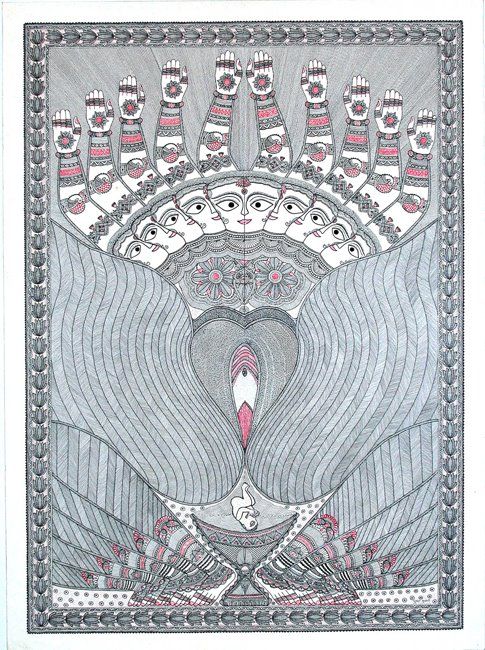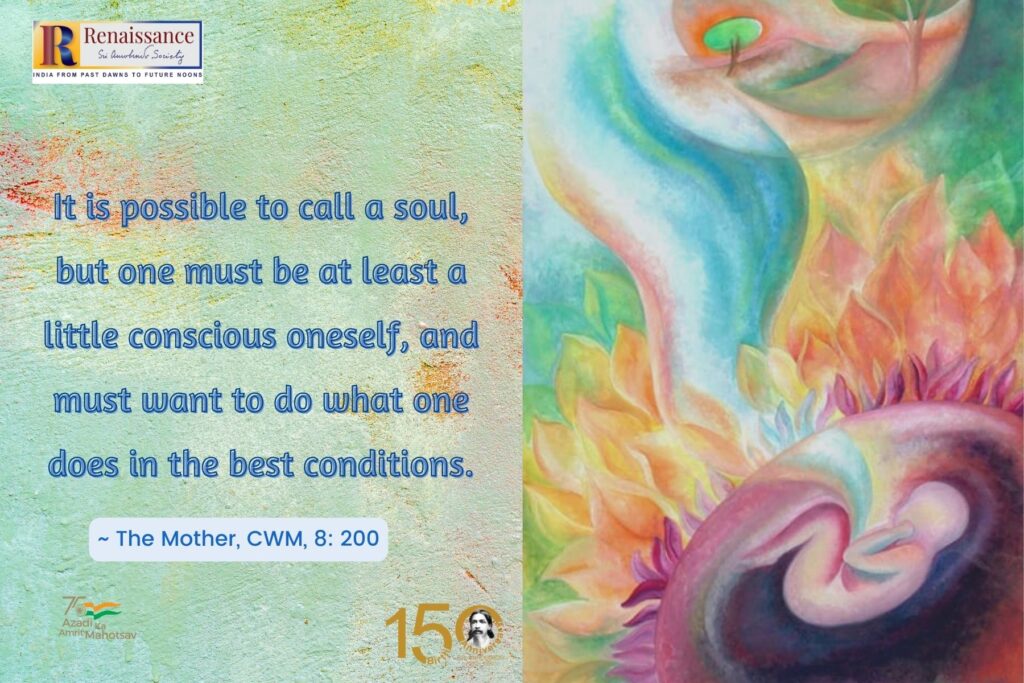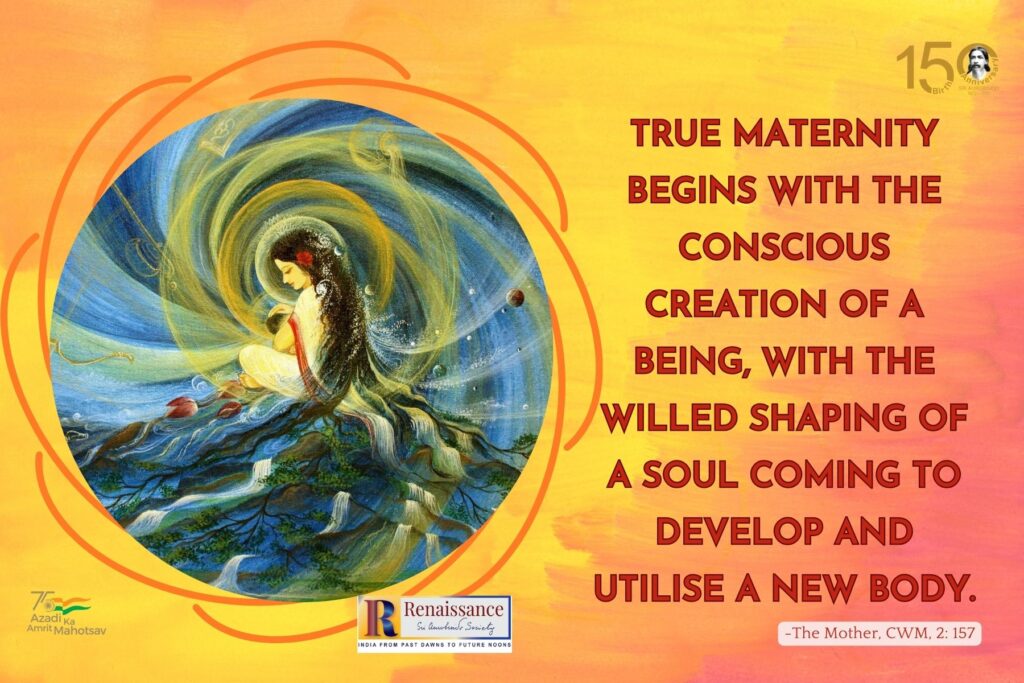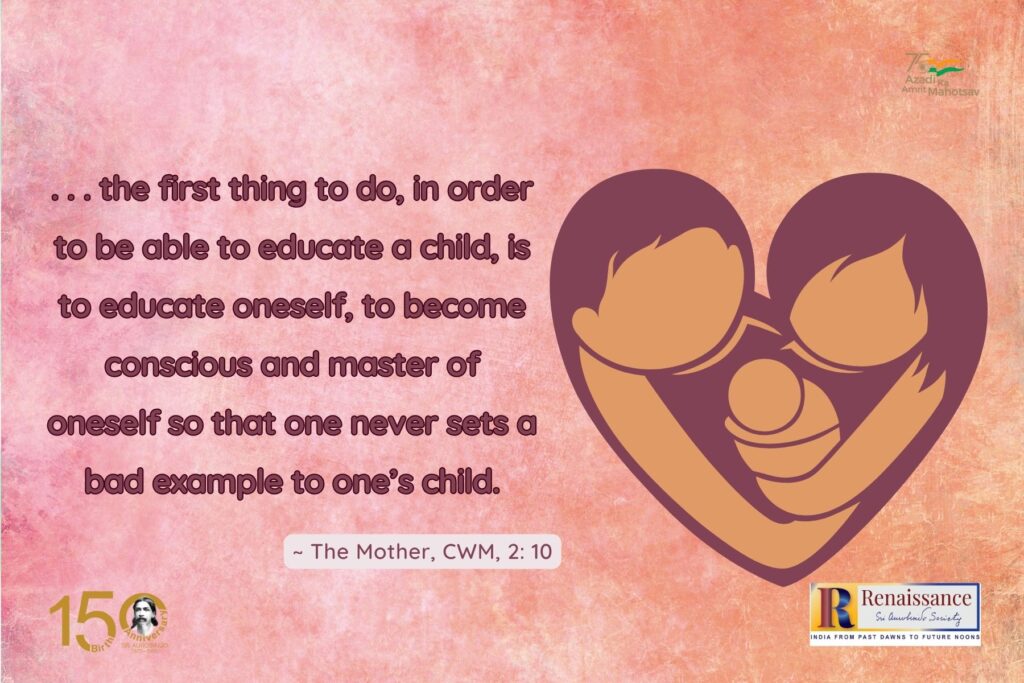Editor’s Note: This article based on a speech delivered by the author. He takes the discussion related to fertility, sexuality and pregnancy to a whole new level of understanding from the deeper perspective of Ayurveda as well as the higher evolutionary urge in humanity.
Abstract
Fertility is a commitment of life to propagate itself. To preserve and propagate the experience, the wisdom that has been accumulated through the ages. When we think of fertility, we cannot but think of sexuality. In fact there are three dimensions to fertility. The physical or sexual, the biological or reproductive and the spiritual or evolutionary. It is as if the three guṇas participate in harmony to fulfill the deeper purpose of nature.
The sexual dimension of fertility is the tāmasic component, the pull of pleasure, the power of māyā that Nature uses as a bait to serve the purpose of reproduction. The biological dimension of fertility is the rājasic component. This brings forth a new life form by dynamic organisation of matter, transmitting encoded information accumulated through generations by passing on the genes.
But in human life, fertility also fulfils the most important sāttvic dimension. And that is of transmitting culture or samskāra, which is the quintessence of spiritual evolution in human life.
Introduction
The word āyus means life cycle or life process, it stands for all the events that characterise life from birth, growth, decay to death. According to Ayurveda, āyus is a process through which the body, senses, mind and self coalesce to manifest life. Life is a continuous effort to sustain this collaboration, and life finds a way to nourish and sustain itself by a process of dynamic adaptation.
In spite of this, life moves towards degeneration, decay and death. In the wake of the inevitable destruction of the physical body, life finds other ways to perpetuate itself. And there are three ways in which life perpetuates itself, one is the continuous renewal of the tissues, the second is by biological reproduction and the third is by transmigration.
Life is the journey of fragmented consciousness. It uses the psycho-spiritual apparatus of the body to de-fragment itself and dissolve in the ocean of supreme consciousness. And in this journey, which is called Āyu, the fragmented consciousness latches on to body after body until it un-entangles itself from the clutches of the lower material nature. A new life is a renewed opportunity to continue in this journey of the expansion of consciousness. This is called as brahmacaryā in Āyurveda. The word literally means the the way or regimen (caryā) to grow and expand into limitless consciousness (brahman, from the root bṛḥ vardhane).
Brahmacaryā – the path to expansion of consciousness
Ayurveda stands for a way of life with a primary focus on expansion of consciousness. Celibacy is an aspect of brahmacaryā and in Ayurveda it means regulation of sexuality, rather than its negation.
This idea is very clearly elucidated in the Carakasaṃhitā. It is clarified that the goal of Rasāyana, the ultimate regimen for prolonging life span, is not just extended life span. Rather it is the expansion of consciousness into the state of Brahman, as was achieved by the sages of yore.
na kevalaṃ dīrghamihāyuraśnute rasāyanaṃ yo vidhivanniṣevate |
gatiṃ sa devarṣiniṣevitāṃ śubhāṃ prapadyate brahma tathaiti cākṣayaṃ ||
(Carakasaṃhitā, Cikitsāsthāna, Chapter 1.1)
It is interesting to note that in Ayurveda, Rasāyana is always followed by Vājīkaraṇa or reproductive medicine. The goal of Rasāyana is to achieve the development of well formed dhātus or tissues and to extend life span and health span. And in the process, to complete the psycho-spiritual evolution of the human mind to manifest consciousness in its fullness. Ayurveda considers the individual who has completed the process of Rasāyana to be worthy of fulfilling the biological goal of reproduction to ensure continuing of embodied life.
Rasāyana thus achieves a samskāra or transformation of the mind and body of the individual. Only a person who has attained the full development of the physical body and expansion of the mind can transfer this samskāra to the next generation and propagate the momentum and impetus for spiritual evolution. This is the meeting point of reproductive biology, sexuality and spirituality.

Reproductive Biology in Ayurveda
Reproductive biology is the mechanism through which the physical body is perpetually remade from the information transmitted by the parents. In Ayurveda this mechanism is likened to the coming together of the principles of Agni and Soma.
The female reproductive element represents the Agni Tattva and the male reproductive element represents the Soma Tattva. Ironically enough, the male personality represents Agni Tattva, whereas the female personality represents the Soma Tattva. In other words, the Agni Tattva is present in a seed form in the female with a dominant Soma personality. And the Soma Tattva is present in a seed form in the male with a dominant Agni personality.
Life manifests when Agni and Soma coalesce together in a delicate act of balance. Agni kindles the fire of transformation. And Soma serves as the crucible as well as the substance that undergoes transformation expressing life. The heat from the Sun represents Agni Tattva and the waters of the Earth represent the Soma Tattva.
In Ayurveda, reproductive biology is the process through which the male and female exchange the most refined expressions of Agni and Soma Tattva to recreate new life.
This analogy is also the central theme of alchemy in Ayurveda, which is known as Rasaśāstra. Rasa is the life fluid. Rasaśāstra is the technique of creating the life fluid from inert matter. Or transforming inert matter into a form that can be accepted by the life fluid or Rasa. Mercury and sulphur form the basis of this alchemical transformation of inert matter. Mercury represents semen of Lord Śiva and sulphur the menstrual fluid of Goddess Pārvati.
Lord Śiva is the ultimate ascetic, a manifestation of the effects of Rasāyana, ever established in the state of expanded consciousness. Yet, he also represents the perfect virility, the purity of the reproductive element. Goddess Pārvati has to make extreme efforts to manifest the virility of Lord Śiva to create a progeny who is capable of annihilating demoniac beings in the world.
Sexuality for reproduction and spiritual evolution
Sexuality triggers the mechanism of the exchange of the Agni Tattva and Soma Tattva to recreate life. Thus, a major function of sexuality is to propagate reproductive biology. But in humans, sexuality also serves a higher function.
As discussed, the Agni Tattva is present in a seed form in the female. And the Soma Tattva is present in a seed form in the male. The coming together of the male and female personalities can potentially nurture the development and complete manifestation of the Agni and Soma Tattvas that are dormant in the female and male.
The Agni dominant personality of the male can kindle the awakening of the Agni Tattva that is dormant and in a seed form in the female. Likewise, the Soma dominant personality of the female can awaken the Soma Tattva that is dormant and in a seed form in the male.
The female ovum and the ovulation cycle are in sync with the waxing and waning of the moon. This further strengthens the idea of the association with the Soma Tattva.
The sexual element in the process of reproduction can open up the two individuals to kick start this process of inner transformation. A balancing of the Agni Soma Tattvas at the level of the personality of the individual prepares the person for a deep spiritual transformation.
In Ayurveda, both the skull and the uterus are compared to the conch. The Sanskrit word for conch is Śaṅkha, which means auspicious (śaṃ) space (kha). The uterus is the auspicious space where the Agni and Soma Tattvas unite to create new life, fulfilling the goal of biological reproduction.
The skull is the auspicious space where the Agni and Soma Tattvas unite to complete the process of psycho-spiritual evolution. This is possible only if the male and female participate in this process with awareness.
This concept is symbolized by the application of the saffron and sandal pastes on the forehead by the female and male. After marriage, the female applies the saffron powder on the forehead in the upward direction. This symbolizes the potential awakening of the Agni Tattva in the female under the influence of the male personality.
The male applies the sandal paste in the upward direction on the forehead. This symbolizes the potential awakening of the Soma Tattva in the male under the influence of the female personality.
Children who grow under the care of the parents who are transforming at the mental level by mutual nurturing of the Agni and Soma Tattvas become well grounded and kindle their spiritual evolution.
Preparation for pregnancy and childbirth
Ayurveda gives elaborate guidelines for conception, pregnancy, childbirth and neonatal care. Before conception, the quality of the Śukra (male reproductive element) and Ārtava (female reproductive element) is to be assessed. And if necessary, treatment regimens are to be administered.
Throughout the course of pregnancy, both the nutrition and mental disposition of the mother need to be taken care of meticulously to nurture the balanced growth of both the body and mind of the growing foetus. According to Ayurveda, kārmic engineering of the foetus can be done during the period of pregnancy. The growing feotus can respond to external stimuli and even learn while in the womb of mother. Ayurvedic texts state that human effort (puruṣakāra) can nullify the impact of daiva (effects of past deeds). So, if necessary, interventions are made during the intrauterine life.
balī puruṣakāro hi daivamapyativartate |
(Aṣṭāṅgahṛdayaṃ, Śārīrasthānaṃ, Chapter 1)
Thus the regimen for pregnancy, childbirth and neonatal care in Ayurveda is aimed at the overall development of the new life. There is a specific emphasis on laying the foundations for spiritual evolution at a very early stage of life.
Discussion
In Ayurveda, fertility, sexuality and reproductive biology serve a higher spiritual purpose of the transmission of samskāra. In this way, not only continuity of life is ensured, but also the flame of spiritual transformation is transmitted from one generation to the other.
Pregnancy and child birth are described in the section of the classical texts called as Śārīrasthānaṃ. Śārīra is often translated as Anatomy and Physiology. In fact, Śārīra covers the entire life cycle of the individual from birth to death. It includes Sṛṣṭiśārīra (the formation of the macrocosm), Garbhaśārīra (the formation of the microcosm), Doṣaśārīra (the functional organisation of the body), Saṅkhyāśārīra (the structural organisation of the body), Marmaśārīra (the vital points of the body), Prakṛtiśārīra (the constitution and personality) and Vikṛtiśārīra (the disorder and destruction of the body).
Ayurveda students are expected to start the study, not by dissecting dead bodies but by witnessing childbirth, the emergence of the microcosm by constituting the elements of the macrocosm.
The womb is the Kṣetra or the field in which the seed of new life is sown. The uterus is itself the temple of life. For that matter, the body itself is considered to be the Kṣetra for facilitating the spiritual evolution of life. In fact, the word Kṣetra means that which prevents spiritual decline of life. The Ayurvedic texts emphasise that the body is indispensable for spiritual evolution and must be protected by all means.
sarvamanyat parityajya śarīramanupālayet | tadabhāve hi bhāvānāṃ sarvābhāvaḥ śarīriṇāṃ ||
(Carakasaṃhitā, Nidānasthānaṃ, Chapter 6)
Conclusion
In conclusion, it can be said that in Ayurveda, the Śarīra or the body is considered to be cause for bondage as well as the tool for liberation at the same time. Working with the body for psycho-spiritual evolution leads to liberation, while using it for sensual gratification leads to bondage.
When we appreciate this higher purpose of the body, then fertility, sexuality and reproductive biology converge to fulfill the higher aspirations of human spiritual evolution.
The sexual dimension of fertility represents the tāmasic component, the sensual attraction, the delusive power of māyā that ensures continuity of life through reproduction. The sexual dimension of fertility also facilitates bonding between the mating couples and lays the foundation for a transformative exchange of the Agni and Soma Tattvas as well as a nurturing environment for the new life.
The biological dimension of fertility represents Rajas, the creative and active force of nature that nurtures new life by systematic organisation of the material elements. In this process, genetic information is transmitted.
The sāttwic element of fertility is samskāra or the spiritual undercurrent that is transmitted from one generation to another that is fostered in the loving and transformative environment created by the spiritual embrace of the male and the female.
References
- Ashtanga Hridaya, edited by Hari Sadashiva & Paradakara Shastri, Chaukhamba Surabharati Prakashan, Varanasi, 2014.
- Charaka Samhita, edited & translated by P.V. Sharma, Chaukhambha Orientalia, Varanasi, 2004.
- Sushruta Samhita, edited & translated by Kaviraj Ambikadatta Sastri, Chaukhambha Sanskrit Sansthana, Varanasi, 2008.
Cover image: Relief of a woman about to give birth, Airavatesvara temple, Darasuram, photo by Suhas Mehra



